Over the past decade, online education has moved from a second option for those trying to return to school to a critical component of almost every major university’s academic programming. Almost 30% of Americans currently in school take at least some distance education classes and as much 15% exclusively take online courses to obtain their degree.
Together with non-degree seeking students, certifications, and the expansion of a la carte online courses such as MOOCs or online boot camp learning experiences, there is a trend for online education in almost every major academic field and profession.
In truth, a broad range of courses and fields are now offering online study options as online education because of its popularity. While most of these online courses and programs are offered by a limited number of schools, new programs are in development at a wide range of colleges and universities. FNU for example is continually developing online components, if not entire programs, to suit the increasing demand.
Tracking Online Education Over the Last Decade
An annual survey of over 2,800 academic leaders is carried out as a collaborative effort between the Babson Survey Research Group and the College Board. The College Board is an association composed of more than 5,900 schools, colleges, universities and other educational organizations that develops and administers standardized tests and curricula used by K-12 and post-secondary education institutions as part of the college admissions process. The complete survey report, Changing Course: Ten Years of Tracking Online Education in the United States, looks at many aspects of online education and how it has changed.
Online education allows a number of benefits that modern students find attractive. Firstly, online education offers considerable flexibility, as well as the ability to go at one’s own pace, to study anytime and anywhere. For many students, the recent inclusion of online courses in higher education programs has made college attainable. In addition, online colleges have had a tremendous impact on education as a whole.
Survey Says: Online Education on the Rise Across America
Previously, in the 2016 Survey of Online Learning revealed that the number of students taking at least one online course has now surpassed 6.7 million. The study’s co-author Jeff Seaman said that the rate of growth in online enrollments remains extremely robust, which is somewhat surprising given that overall higher education enrollments actually declined during this period.
Now in 2019, in addition to full-time degree programs or individual courses, some U.S. institutions of higher education offer part-time blended programs that may be partially online and require occasional on-campus attendance. These hybrid program also serve a purpose – so why do students enroll in distance education?
- They have childcare or eldercare obligations.
- They cannot take time away from their current jobs to enhance their future employment possibilities.
- The program may be offered at a location that is not feasible to attend for socioeconomic, cultural, or political reasons.
Online Education Bucks Trends; One-Third of Students Take Online Courses
You may have heard that overall higher education enrollments have declined, but online education continues to be a growing area. Indeed, these studies have found that 32% of higher education students now take at least one course online: over 6.7 million students were taking at least one online course, an increase of 570,000 students in previous years.
MOOCs – The Next Horizon in Global Education
MOOCs can be seen as representing the next milestone in online education because they have the potential to reach millions of people around the world. However, what most people, including university leaders, don’t yet realize is that this new way of teaching and learning, together with employers’ changing needs, will likely bring with it a new credentialing system that may compete with college degrees within a decade.
A Mass Open Online Course is an online course aimed at large-scale interactive participation and open access via the web. In addition to traditional course materials such as videos, readings, and problem sets, MOOCs provide interactive user forums that help build a community for the students, professors, and teaching assistants (TAs).
The widespread advent of MOOCs represents much more than just a distribution mechanism. Done on a widespread model, the MOOC model promises students faster, more consistent educational engagement and high-quality content.
Therefore, MOOCs contain enormous potential for students, employers, and teachers – all the while changing the cost structure and practices of traditional campuses. While this is indeed a very new area of online education, it is likely that in the next decade many institutions will start to look at offering MOOCs as the preferred option in the future.
Improvements In Technology Related To Online Education
In a wonderful symbiotic way, the rapid adoption of online education has benefitted from the many technologies that have also progressed rapidly. Some of the most crucial technologies to impact online education in 2018 included
- Increased access to bandwidth
- Online testing support
- Increased identity verification measures for testing
- Support for educators making courses
- The proliferation of more sophisticated measures of online academic quality
- Support for educators making courses
- Administrators monitoring online student outcomes
Universities seeking to increase revenue or enrollment has continued to advance as well. As educators moving into online settings see their class sizes skyrocket, productivity and tracking tools are paramount to educational success. Some of the most common online education platforms include Blackboard and Moodle. They offer tracking, producing, and course iterations in a convenient way. A whole industry of online program manager companies have grown up around facilitating the growth of online programs for universities.
Tracking student outcomes and support measures has reached a greater level of maturation and was one of the original concerns when online education was gaining popularity. This has been a result of their being more raw data surrounding online universities, plus the push for transparency in higher education outcomes. Even ranking methodologies for schools have come a long way in a short amount of time. Any perfect program for a student will come down to what is right for them, but at least the online college ranking sites have continued to hone their methods to aid in this decision process to greater success in 2019.
Quality of Learning: Online Education vs. Traditional Education
A common question among prospective students is about the quality of learning offered by online programs. While there is little doubt that online education can enable students to flexibly study at their own pace while balancing personal and professional responsibilities with their academic duties, many students question whether the quality of learning is the same. To that end, the study found that seventy-seven percent of academic leaders rate the learning outcomes in online education as the same or superior to those in face-to-face.
A major reason for this could be that because online education allows many students to pursue education who would not otherwise be able to do so due to other responsibilities, students who pursue online courses are highly motivated, curious, and willing to take responsibility for their own learning process. In addition, while it may seem counter intuitive, online learning offers a considerable degree of personal interaction because students are often encouraged to personally contact their instructors or facilitators through email, phone, or Skype in order to touch base and ensure that they have understood course goals, materials and assignments.
The Future of Education
Universities that offer online courses and degrees are well-positioned to develop new models of education that combine lower costs, higher quality, and better alignment with the needs of the labor market and particular professional fields. It’s impossible to predict the future, but it looks likely that there will be two different branches of learning experiences in higher education. The first would still be campus-centric, which would allow more traditional social experiences along with technology that would make the learning experience more effective.
This could mean that larger lectures are held exclusively online, and class time would be reserved for laboratory or small group work and conversation that develop students’ collaborative and problem solving skills. The other branch of higher education learning experience would be digital-centric, with a core online component. This might be considerably less costly, and possibly be supplemented by small group work or collaborative learning in physical settings.
Alternatively, students can also opt to customize their entire curriculum based on the kind of career they want to create. These days, careers are invented every day and colleges can’t keep up. Therefore, if a student is able to select what they need to know and build a career off of it, all parties will win.
Online Education – A Core Component in the Education of the Future
It is not yet certain how colleges and universities will change in the coming decades. However, online education will certainly be a core component of higher education that offers broader access, improved employability, and deeper learning— all of which means numerous benefits for both individuals and society as a whole. Florida National University offers traditional, online and hybrid classes to ensure that students have access to classes that fit their learning style and their schedule. To learn more about your options for higher education, please contact one of our advisors today!



